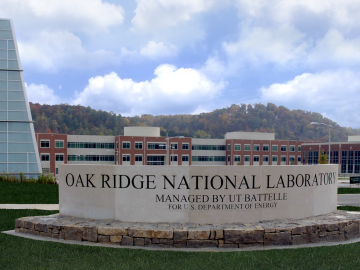Filter News
Area of Research
- (-) Neutron Science (7)
- Biological Systems (1)
- Biology and Environment (10)
- Building Technologies (1)
- Chemical and Engineering Materials (1)
- Clean Energy (27)
- Energy Sciences (1)
- Fusion and Fission (1)
- Isotope Development and Production (1)
- Isotopes (1)
- Materials (13)
- Neutron Data Analysis and Visualization (2)
- Nuclear Science and Technology (2)
- Supercomputing (12)
News Type
Media Contacts

Currently, the biggest hurdle for electric vehicles, or EVs, is the development of advanced battery technology to extend driving range, safety and reliability.

Nonfood, plant-based biofuels have potential as a green alternative to fossil fuels, but the enzymes required for production are too inefficient and costly to produce. However, new research is shining a light on enzymes from fungi that could make biofuels economically viable.

For decades, scientists sought a way to apply the outstanding analytical capabilities of neutrons to materials under pressures approaching those surrounding the Earth’s core.

Warming a crystal of the mineral fresnoite, ORNL scientists discovered that excitations called phasons carried heat three times farther and faster than phonons, the excitations that usually carry heat through a material.

Researchers from Yale University and ORNL collaborated on neutron scattering experiments to study hydrogen atom locations and their effects on iron in a compound similar to those commonly used in industrial catalysts.






